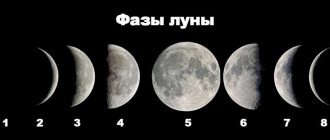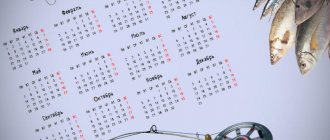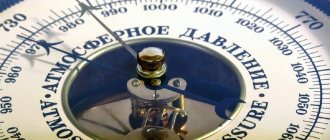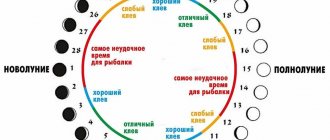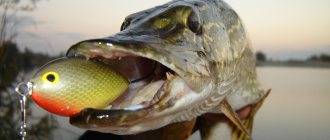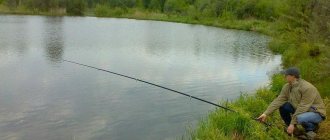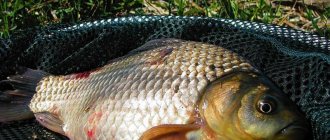Yuri 09/11/2020 4712
It is a generally accepted fact that environmental conditions influence the behavior of any living organism. Many beginners return after night fishing without a single bite. Aquatic inhabitants, according to ichthyologists, are more susceptible to the influence of the moon. Let's look at how the moon works, and whether it's really worth sticking to the lunar calendar.
How it works?
Recently, the practice of using the lunar calendar has become increasingly popular. Moreover, this applies to both maintaining a healthy lifestyle and all kinds of activities. Experienced fishermen confirm that there is a direct connection between the activity of fish and the night luminary. Based on numerous studies and personal observations of experienced fishermen, the following conclusions can be drawn:
- The influence of the moon phase on fish bite cannot be underestimated.
- The behavior of various types of river inhabitants within 24 hours may differ depending on the type of reservoir and terrain.
- In addition to the phases of the moon, the behavior of aquatic inhabitants is also greatly influenced by the time of day, weather and atmospheric pressure, air and water temperature.
Many representatives of the fair sex know that cutting their hair on certain days of the lunar cycle is not recommended. Otherwise, they may stop growing altogether. Likewise, fishermen believe that the catch, depending on the phase of the night star, can be good or bad. However, you should not rely entirely on the lunar calendar. The angler should check in advance what conditions will be during the planned fishing trip.
When the fish bites and when the fish don't bite
Andrey Shalygin: I won’t attach the MAE (Marine Astronomical Yearbook) and BAS (Heights and Azimuths of the Stars) tables to you, nor will I teach you how to calculate the local tide height, but we can quite easily present the real-life opinions that exist among experienced fishermen.
Of course, various existing fish-biting programs for smartphones or fish-biting forecast tables on websites can be treated with varying degrees of confidence, but it is absolutely certain that today’s climate and weather changes often reduce their entire calculated part to the opposite. However, you still need to know the general principles of the influence of weather on fish biting.
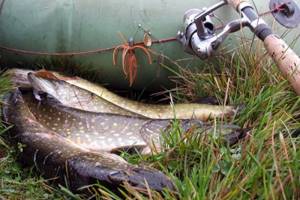
It is impossible to deny the influence of the sun and the phases of the moon on the life of earthly creatures.
Currently, science has traced cycles associated with the rotation of the earth in relation to the moon (28 days) and stars (27 days), during which the sun makes one revolution around its axis, as well as fairly synchronous periodic changes in solar activity and moon phases .
Changes in the rhythm of life of earthly creatures can also be traced depending on the rhythm of life of the creatures that are their food. These rhythms are divided into hourly, daily, seasonal, annual, etc.
Shifts in hourly, daily, seasonal and other rhythms are most often compensated by their positive or negative actions, but coincidences are also possible, which can lead to misfortunes and disasters in relation to some living beings.
In such cases (by no means calendar-systematic), the influence of the sun and moon can have tangible consequences for fish and fishermen. Of course, fishermen should not blindly believe in tables from the series “lunar fish-biting calendar” or “fish-biting schedule under the moon,” although the moon plays an important role in fish-biting, especially in the hot season.
How does the night light affect the behavior of fish?
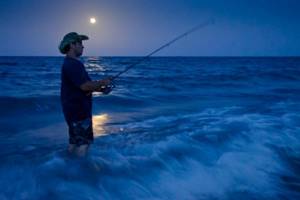
Many river inhabitants are extremely sensitive to energy changes. The phases of the moon and the fish bite are directly related, as every fisherman knows. If you choose the wrong day, you can sit on the shore for several hours and not wait for the catch.
Many people mistakenly believe that fish and animals use the same organs for perception as humans. However, this point of view is incorrect. When swimming, almost all types of fish use an organ called the chord line. In the fish body it performs the same function as the vestibular apparatus in the human body. In addition, they also have a well-developed magnetic analyzer. This organ reacts sharply to any changes in gravity and wave fluctuations. It is for this reason that during a tsunami, fish swim away from the scene of events, focusing on solar flares, which even ultra-modern technology has difficulty registering. Mollusks and all types of insects also have a similar susceptibility.
Another important factor to consider when planning your fishing date is what the lighting on the pond will be like. The bite during the full moon is usually more active. When visibility is poor, the fish behaves warily.
Phases
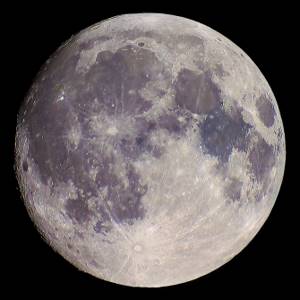
Let's look at them in more detail. During which phase of the moon does fish bite best? Experienced fishermen usually give beginners the following instructions:
- On a new moon you may not expect a rich catch. Most river inhabitants behave extremely passively and are practically not interested in baits.
- The full moon is also not suitable for fishing. For most living beings, this is a rather difficult period, which negatively affects their general condition and well-being.
- Early new moon and full moon are also not suitable. At this time, only the month is visible in the sky. These days the fish practically don’t bite.
- The best times for fishing are considered to be the first and second quarters. During this period, the influence of the moon on fish biting is minimal. The inhabitants of reservoirs behave quite naturally.
It is worth considering that the rhythms of nature have a wave-like character. The influence of lunar periods is also wave-like.
In accordance with this, we can distinguish approximate time boundaries of four phases:
- First: the full moon and 72 hours before and after it.
- Second: the average day of the waning moon, 72 hours before and after it.
- Third: new moon, three days before and after it.
- Fourth: waxing moon, three days before and after.
However, no matter what stage the moon is in, before you go fishing, be sure to take into account the whole range of factors: weather conditions and atmospheric pressure.
Winter fishing
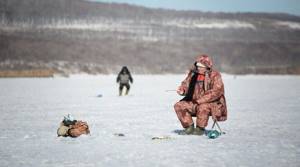
So what do you need to know about this? How does the moon affect fish bite? The position of the celestial body really affects the efficiency of fishing. As experienced fishermen assure, there is a direct connection between the phases of the moon and fishing. As for winter fishing, there are some recommendations:
- It is better not to catch fish when the full moon is approaching. During this time, the catch is guaranteed to be low. You will just waste your time and energy.
- During the new moon, the influence of the moon on the fish bite changes noticeably. The fish's appetite is greatly weakened. Even a serious predator will not respond to the offered treat.
In the cold season, it is very difficult to choose optimal weather conditions for fishing. However, in order to increase the likelihood of a good catch, it is imperative to take into account all factors influencing the behavior of river inhabitants.
Pike biting by time of day or daily activity of pike
There are days when pike bites occur more or less evenly throughout the day. But more often you have to catch pike on the so-called “exits”. Knowing the fishing location and the expected time of “release” of the pike can be the key to fairly successful fishing. The number of such pike exits during the day can be different: three, two, or even one exit per day. Bites can follow one after another, but not for a long time, usually 15-20 minutes.
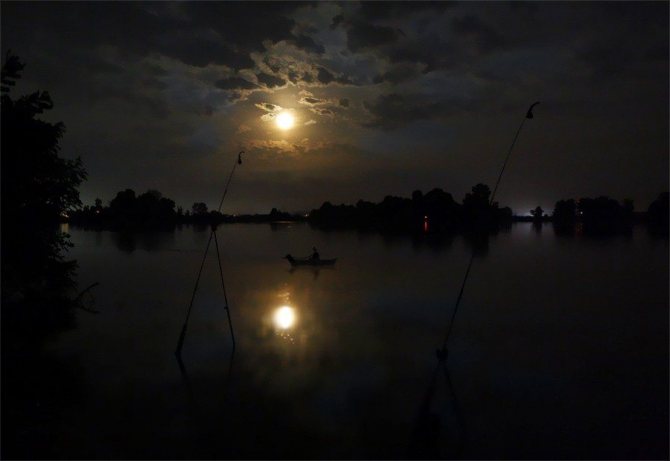
Under favorable weather conditions, the first pike bites are observed 1.5-2 hours before dawn and can be repeated at intervals of 2-3 hours until 11-12 hours. The second wave begins in the afternoon after 14-15 hours and ends an hour after sunset. Night pike fishing can often be very successful.
We suggest you familiarize yourself with: PVC boats for motors with an inflatable bottom rating of popular manufacturers
In conclusion, I would like to say that everything said above cannot be taken as a rule. It happens that, despite all the unfavorable forecasts, you can end up with a decent catch of pike, and at the same time it happens that all the favorable factors do not bring anything good.
Predator reaction
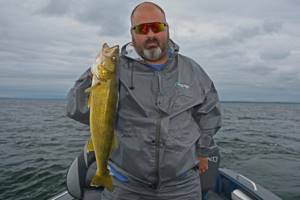
Even novice anglers know that large fish are caught well in the spring. This is due to the fact that just at this time of year the predators begin to eat. However, sometimes, even if the weather conditions were very favorable, fishermen often return empty-handed. What is the reason here? The influence of the moon on fish bite is crucial.
To ensure that the catch is always successful, you must follow the following rules:
- Under no weather conditions is it better not to go fishing during the full moon. The moon in this phase has a negative effect. This applies to both small fish and large individuals. When the moon is full, there is a high chance that the fish will be overly passive and will not even want to look at the treat.
- When the celestial body is more than half visible, favorable conditions for biting are created. Good lighting allows the predator to rely not only on smell, but also on vision. As experts confirm, the chance of seeing a bite during this phase of the moon is quite high. During the new moon, predatory fish bite much better. This is confirmed by fishing enthusiasts around the globe.
The influence of moon phases on fish biting
If you look back into the past and look at the life of our ancestors, you will notice that every day was chosen for fishing. Focusing on the phases of the Moon, the lunar day and in which zodiac sign the night star is located were also taken into account.
Lunar days are counted starting from the new moon and as the moon rises in the sky. Before the first three lunar days have passed, there is nothing to do on fishing, there will still be no catch. It is better to start fishing for fish from 3 to 10 and from 19 to 22 lunar days. These days, the fish's appetite awakens, and bites will be frequent.
It is better to go fishing from 3 to 10 and from 19 to 22 lunar days
As you know, the phases of the Moon affect the tides and low tides in water bodies. During high tide, the fish begin to actively feed. This is due to greater flooding of land areas and an increase in the number of places that become additional food sources for fish. In addition, the Moon, reflecting the sun's rays, directs them to the Earth, which favors the processes of photosynthesis.
Freshwater fish also experience the effects of tidal water conditions. According to scientists, this happens for two reasons:
- Freshwater fish are descended from marine species, so their genetic memory contains information about tidal influences.
- Tidal gravity also acts on land, which is also capable of rising, albeit with a smaller amplitude. And this subsequently affects fresh water bodies.
Large predatory fish are especially well caught in the spring, since during this period they begin to eat. However, even during such a period, you can return home empty-handed. To avoid getting into this situation, consider the following rules:
- It’s better to leave thoughts about fishing until a better day than the full moon, even if the weather is excellent and calm. The moon in this phase negatively affects the behavior of fish, even such large and powerful ones as catfish and pike. On the night of the full moon, there is a high probability that the fish will be passive and will not even look at the offered delicacy;
- the new moon in the stage of visibility of the Moon will illuminate the pond well by more than half. This will create favorable conditions for biting. On such nights, the predator relies not only on its developed sense of smell, but on its vision in the water. Lighting will give you a better chance of seeing potential prey even at night.
Conducted experiments confirm that during the new Moon, almost all predators bite much better, regardless of the terrain and geographical location.
The influence of the moon depending on the type of river inhabitants
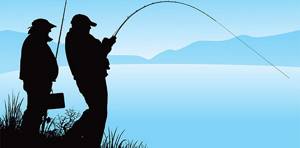
One of the most important factors to consider when choosing a fishing date is the type of fish. The time of active eating will depend on it. For example, in warm water you will never catch burbot. But for asp fishing, the warm season is perfect. Pike do not come out to hunt for some time after spawning. After this, the ide feeds quite actively and because of this, it often falls for the bait.
When is the best time to catch pike?
Let's look at this in more detail. It is believed that pike bite best on a warm day with a light wind. However, it also happens that even then the fish may not bite at all. Most likely the problem is related to the phases of the moon. Pike reacts to them a little differently. As experienced fishermen note, the predator is most active during the new moon. It is at this time that she greedily grabs all the bait offered. The chance of catching large specimens at this time increases significantly. When the moon moves into the first quarter, the pike bite weakens, but at the same time the fish continues to actively feed. Her activity at this time is at an average level. Therefore, the first quarter is not the most favorable time for fishing.
Pike react worst to offered bait during the full moon. Even when the weather is favorable for biting, you have to torture the fish for a long time, using various fishing techniques. The activity of river inhabitants increases as the satellite moves into the last quarter, returning to the average level. This phase is considered neutral.
Weather and pike bite
Apart from the Moon, nothing good can be expected from any kind of “magnetic storms”. Pike, unlike humans, senses the approach of a magnetic storm several days before it begins. At this moment, she is actively feeding, perhaps trying to compensate for the upcoming pause in food intake. Pike also greedily takes the day before a sharp change in weather conditions: cold weather, prolonged bad weather, etc.
Pike weather can be considered cloudy or slightly clearing days with light winds from the south, west and north. A light drizzle on such days can only be helpful. Often, strong winds have a positive effect on pike biting, although it does cause some inconvenience to the spinning angler. As fishermen say: a strong wind drives the “toad” out of the reed thickets.
Steady atmospheric pressure or its decrease with low intensity also activates the pike. Repeatedly there has been a sharp spike in activity before a sudden deterioration in weather, especially before a thunderstorm.
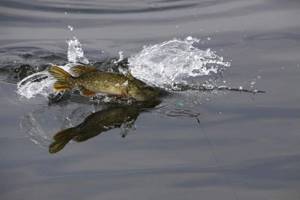
In winter, a sharp drop in temperature by 10-15 degrees with a jump beyond -20°C is usually the worst indicator for pike fishing. A sunny day, and even with a strong east, northeast wind, also promises little good. However, stable weather, even at very low temperatures (below -20°C), is usually a very favorable factor.
In addition to weather factors, in most reservoirs the deterioration in pike biting is associated with a sharp change in water level. Water releases, which are often practiced in reservoirs, are an anomalous phenomenon; the fish react to this painfully and stop feeding within 1-2 days after the new level is set.
It is definitely impossible to give the concept of ideal pike weather with a high degree of accuracy; one can only note the optimal directions, which with a high degree of probability will allow the angler to hope for a good bite. After all, the final result of fishing is influenced not only by weather factors, but also by the correct identification of a promising fishing spot, optimally selected equipment and bait, and the skill of the fisherman plays an important role in overall success.
The feeding activity of pikes does not stop throughout the year. Sexually mature individuals take a short break only during the spawning period. Based on this physiological need, we can conclude that the predator is available in its prey all year round; you just need to be able to determine when its appetite is on the rise.
Fishing for pike in the rain can bring good results to the angler. If for most species of carp fish prolonged rains become a prerequisite for a decrease in feeding intensity and retreat to depths, then for a predator such passive behavior of its direct food objects becomes an incentive to start active hunting.
If in rainy weather there is a slight wind that does not change its directions, then the chances of success can only increase.
We suggest you read: How to remove gills from a pike
Windy weather helps saturate the water with oxygen, which has a positive effect on all types of fish, including predators. In addition, surface ripples camouflage the angler much better, preventing the fish from tracking suspicious objects and moving away from fishing points. The influence of wind on pike bite is more likely to be a positive factor than its complete absence. Another thing is that the force of the wind should raise large ripples on the surface of the reservoir, and not a distinct wave.
In addition, it was noted that the southern, western and southwestern wind directions have a greater influence on the bite intensity than the wind directions from other parts, and this applies not only to the period of open water, but is also relevant during the freeze-up season.
Illumination
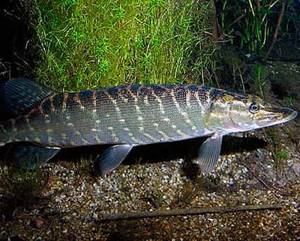
There is an opinion among fishermen that fishing for pike on sunny days is not as successful as hunting in cloudy weather. But this statement does not always live up to its expectations, and the preferences of the predator in its activation with changes in illumination in different periods of the year are especially noticeable. For the most part, pike are diurnal predators and at night the fish are most likely to be active only during periods of clear skies during full moons or in places where the water surface is artificially illuminated.
On clear days, fishing is successful at sunrise and sunset, when the light hits the water surface at a low angle. On cloudy, but not gloomy days until dark, the toothy bite can last throughout the daylight hours with the same intensity.
It is no secret that the influence of the moon has a significant impact on the vital activity of all organisms on the planet. As the phases of the moon change, the behavior of the fish also changes. The full moon negatively affects life processes, slowing down the activity of the predator. The new moon, on the contrary, stimulates an increase in feeding activity, forcing fish to rush to actively playing baits.
The full moon and the last quarter are not the most promising fishing times, when even during the season, active pike can noticeably reduce the number of their bites.
When determining the best weather parameters for pike, they take seriously adjustments for the season of the year. From general observations, we can identify a number of factors that determine the intensity of the bite, which depend little on the time of year. These include sudden changes in temperature, whether it is an increase or decrease. Abnormal summer heat and severe winter frosts, setting in for five to seven days, reduce the bite to nothing, absolutely not taking other weather phenomena into account.
It is also worth focusing on the fact that pike bite better in cool water. An increase in water temperature in the warm season above 22 degrees forces the predator to retreat to depths and reduce feeding intensity. The next part of the article will be devoted to an analysis of optimal weather conditions for a specific season of the year.
Pike weather in autumn does not tolerate radical changes. The gradual and natural cooling of the season stimulates the fish to prepare for the hungry winter period and in October brings the predator to the autumn glutton that begins at this time. Now warming temperatures can negatively affect the nutrition of fish, which is especially noticeable with the advent of Indian summer.
Under such conditions, pike move throughout the entire reservoir without staying in permanent places. It’s easier to catch it in motion, and the list of preferred baits in the fall is unlimited; absolutely everything is included, from live bait to large, faded-colored spinners.
Freeze-up initially greatly activates the predator, because every angler knows first-hand the success of fishing in first-ice conditions, especially during periods of stable pressure without surges. Over time, the fish, crushed by the thick ice, lose activity, switching to episodic bursts of biting, which are clearly recorded on sunny days during thaws, without regard to the deep winter. But even on such days the wind should be from the south and south-west, and with a change the bite immediately worsens.
We invite you to familiarize yourself with: The most catchy lures for pike in the fall. My top 7
As the spring months approach, the number of sunny days with prolonged thaws becomes greater, and therefore the likelihood of a good bite increases.
Pike weather in spring
With the spring melting of the ice, the predator begins to prepare for spawning, increasing its depleted energy reserves after wintering. Fish react to warming water and its oxygen saturation by moving to smaller areas of reservoirs. Unlike autumn, in spring sunny days are more promising for hunting, as well as days with partly cloudy skies and light drizzle with moderate winds.
A change in temperature from frost to heat is not as critical for the feeding activity of a growing predator as a sharp decrease or increase in atmospheric pressure, which worsens the bite. When spawning begins, the pike completely stops feeding, resuming it only after spawning and then in a lower mode than before spawning. Closer to summer, it becomes more successful to catch toothy fish on cloudy days with the orientation of a warm southern wind.
Pike weather in summer
Summer toothfishing is more promising in partly cloudy weather. On such a day, fish hatches occur when the intensity of sunlight decreases, as well as at dawn and dawn. In the heat, the fish stop feeding, going into the depths with colder water. Pike loves periods with light drizzling rain, and especially pre-storm times, when within a couple of hours before bad weather its feeding activity rises to the level of gluttony.
After serious bad weather, you can forget about bites for a day or two until the weather conditions completely stabilize. After the heat subsides, the predator becomes more active and, in cloudy weather, will be caught all day, and a moderate wind will only contribute to the bite, reliably camouflaging the fisherman and making the predator more relaxed in its actions.
What do the professionals say?
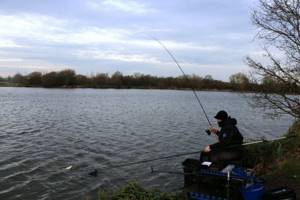
Experienced fishermen know how the full moon affects the fish bite and when is the best time to plan fishing. However, it is worth considering that the phase of the moon is far from the only factor influencing the bite. You shouldn't give him maximum attention. Based on the feedback from fishermen, we can conclude that the activity of river inhabitants is greatly affected by changes in atmospheric pressure, direction and strength of wind, water and air temperature, precipitation and the number of clouds in the sky. Typically, fishermen primarily pay attention to these factors.
The weather really has a decisive influence on the bite. But if you also take into account the position of the earth’s satellite, the chances of an abundant catch will increase significantly. You should not go fishing during the full moon. The moon in this phase negatively affects the behavior of fish. Favorable conditions for biting occur during the new moon. On such nights, fish rely not only on their own sense of smell, but also on visibility in the water. Experiments conducted around the globe confirm that predatory fish bite much better during the new moon.
Why is the lunar calendar useful for a fisherman?
The lunar calendar for fishing was developed based on observations of the effect of the gravitational field on the ebb and flow of tides and on the body of animals.
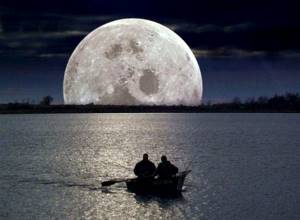
How true are lunar calendars?
The fisherman's lunar calendar first appeared in America in 1962. The system for calculating favorable and unfavorable days was based on the observations of American fishermen. The compilers studied the stories of fishermen and compared the dates of successful and unsuccessful days with the dates of lunar cycles. It turned out that the fish bite depends on the phase of the moon. The bite was approximately the same on different bodies of water in the same month, at the same time of day and in the same phase of the lunar cycle.
The veracity of the lunar fishing calendar has been noted by many fishermen, but the behavior of the prey also depends on other factors:
- type and characteristics of fish;
- type of reservoir;
- Atmosphere pressure;
- influence of sunlight, lighting;
- Times of Day;
- presence or absence of precipitation;
- wind strength and direction;
- air temperature.
These factors have a greater impact than the Earth's satellite, so you should not rely only on information from the fishing calendar, you need to take into account all aspects.
The influence of the Moon on the lives of water inhabitants
Fish belong to the class Chordata. They have a well-developed lateral line - a sensory organ, a channel that is sensitive to environmental pressure, the direction of water flow, and flow speed. This sensitivity explains the dependence of the behavior of the inhabitants of reservoirs on the ebb and flow of tides.
Water inhabitants also react to magnetic vibrations of varying degrees of strength. In addition to the lateral line, which also acts as a compass, the nervous system of the fish reacts to electromagnetic influences.
The Moon influences both the Earth's electromagnetic field and gravity. That is why the fish body is so sensitive to lunar influences.
Experienced fishermen have noticed that the spawning time of most fish falls on the period of the waxing Moon, in the first phase and first quarter.
in winter
When planning winter fishing, you need to take into account that fish at this time of year are weakly influenced by the Moon as a source of illumination. Rivers, seas and lakes are covered with a thick layer of ice, which is why light almost does not penetrate into the water column. It is also necessary to take into account the following aspects of the Moon’s influence on fish biting in winter:
- During the new moon, the bite in winter is insignificant or absent.
- During the new moon, the prey is inactive and its appetite decreases. It has been noticed that predators hardly react to the bait.
- In winter, fishing during the full moon can be successful if the target is a predator. At this time, the pike rises upward for the purpose of hunting.
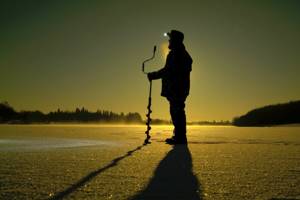
It is difficult to say exactly in what phase the fish bite in winter. The decisive factors remain the weather, temperature and wind direction, not the lunar cycle.
In summer
Summer is a favorable time for fishing not only during the day, but also at night. The moon is a wonderful source of light. Predators are often more active at night, because the heat of the day subsides and aquatic inhabitants begin to look for food.
